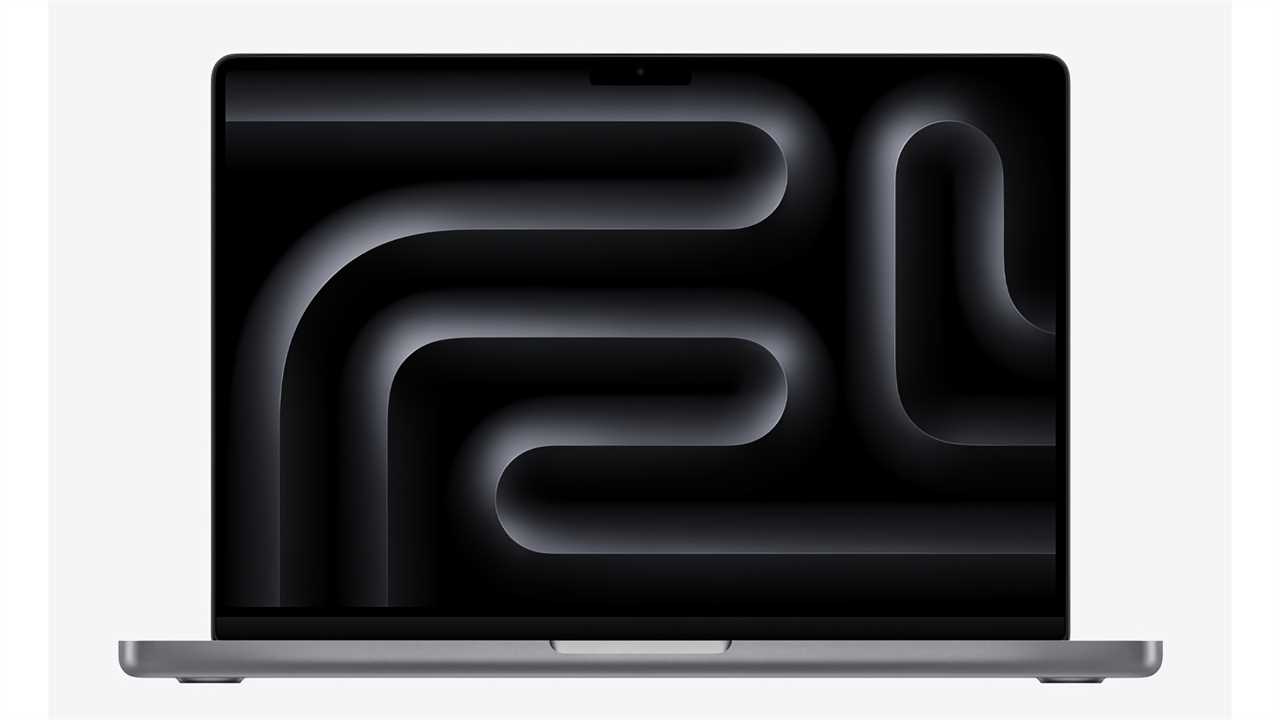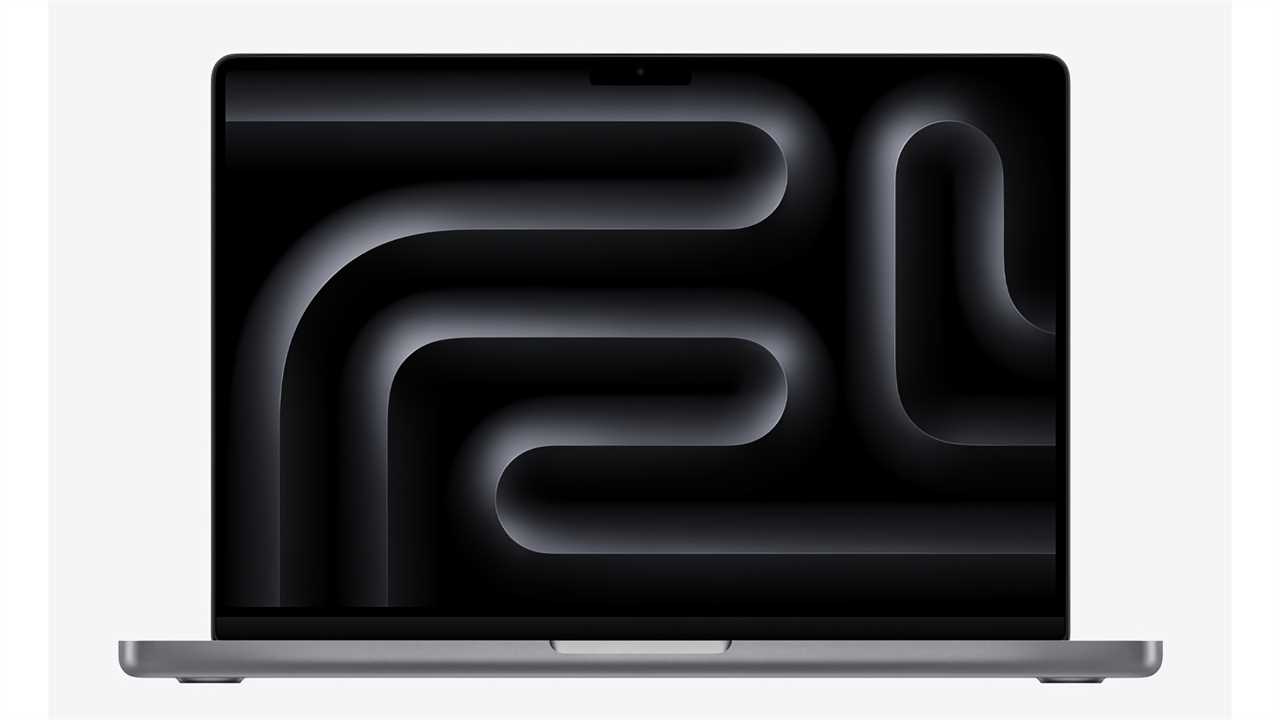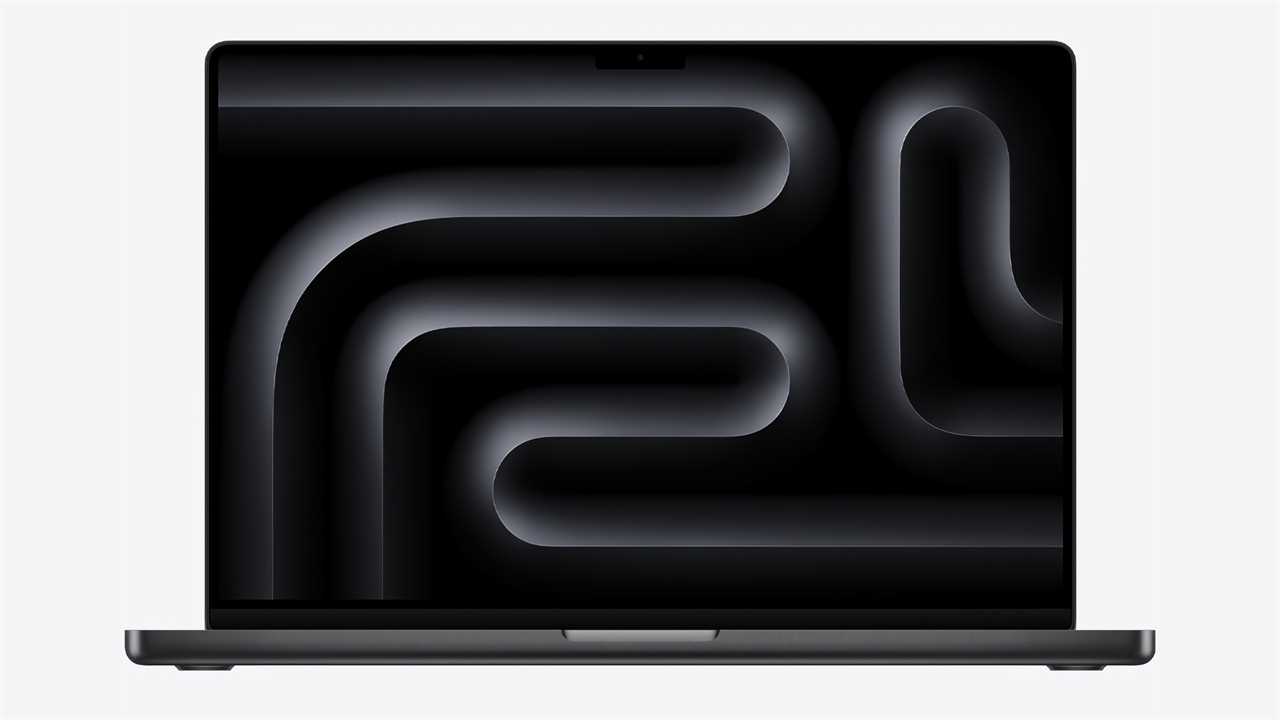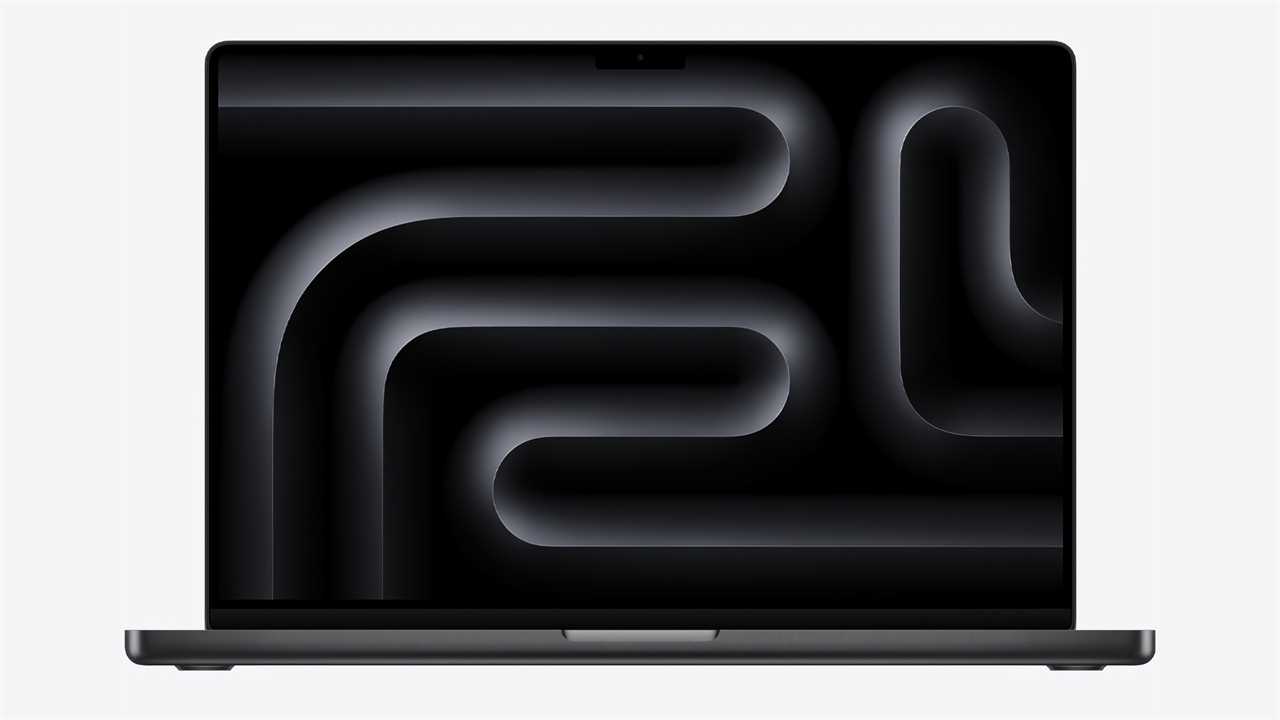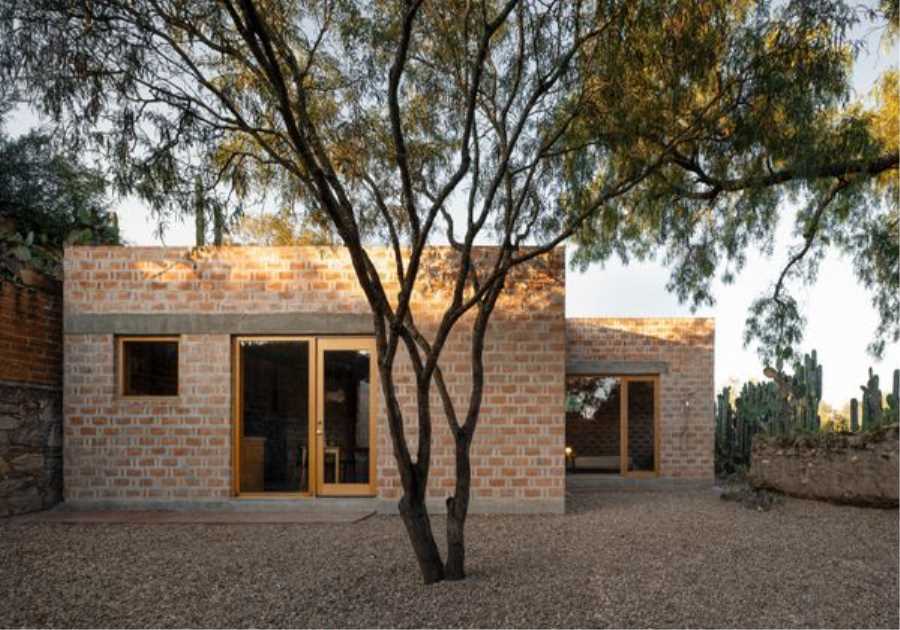Macworld
As of November 2023, Apple sells two MacBook Pro models: a 14-inch model with either the M3, M3 Pro, or M3 Max, and a 16-inch model with either the M3 Pro or M3 Max. The company used to sell a 13-inch MacBook Pro but this model has now been discontinued.
The M3 chip in the 14-inch MacBook offers adequate power for most users, but the M3 Pro and M3 Max processors are superior and rather incredible. However, the MacBook Pro is more than just a killer processor. It’s full of great features like a ProMotion HDR display, HDMI output and MagSafe. If you’re having trouble deciding which one to get, here’s how they compare.
For more advice about choosing the Mac laptop for you read: MacBook buying guide: Which Mac laptop is best? and MacBook Pro vs MacBook Air.
14-inch vs 16-inch MacBook Pro: Specs compared
We’ll discuss some of the more salient differences point-by-point, but first here are all the most important specs at a glance.
| 14-inch MacBook Pro | 16-inch MacBook Pro | |
|---|---|---|
| 16in MacBook Pro, M3 Max review | ||
| Starting Price | $1,599/£1,699 | $2,499/£2,599 |
| Maxed-out Price | $6,899/£6,999 | $7,199/£7,299 |
| Dimensions | 0.61 x 12.31 x 8.71 inches 1.55 x 31.26 x 22.12 cm | 0.66 x 14.01 x 9.77 inches 1.68 x 35.57 x 24.81 cm |
| Weight | M3: 3.4 lbs (1.55 kg) M3 Pro: 3.5 lbs (1.61 kg) M3 Max: 3.6 lbs (1.62 kg) | M3 Pro: 4.7 lbs (2.14 kg) M3 Max: 4.8 lbs (2.16 kg) |
| Processor | M3, M3 Pro, or M3 Max | M3 Pro or M3 Max |
| CPU | M3: 8 cores (4 performance) M3 Pro: 11 or 12 cores (5 or 6 performance) M3 Max: 14 or 16 cores (10 or 12 performance) | M3 Pro: 12 cores (6 performance) M3 Max: 14 or 16 cores (10 or 12 performance) |
| GPU | M3: 10 cores M3 Pro: 14 or 18 cores M3 Max: 30 or 40 cores | M3 Pro: 14 or 18 cores M3 Max: 30 or 40 cores |
| Neural Engine | 16-core | 16-core |
| RAM | M3: 8GB, 16GB or 24GB (200GBps) M3 Pro: 18GB or 36GB (400GBps) M3 Max: 36GB, 48GB, 64GB, 96GB, or 128GB (400GBps) | M3 Pro: 18GB or 36GB (400GBps) M3 Max: 36GB, 48GB, 64GB, 96GB, or 128GB (400GBps) |
| Storage | 512GB, 1TB, 2TB, 4TB, 8TB | 1TB, 2TB, 4TB, 8TB |
| Display | 3024 x 1964, 1,000 nits HDR (1,600 peak), 600 nits SDR, P3 wide color, True Tone, 120Hz ProMotion | 3456 x 2234, 1,000 nits HDR (1,600 peak), P3 wide color, True Tone, 120Hz ProMotion |
| FaceTime camera | 1080p | 1080p |
| Ports | 3 Thunderbolt 4/USC-C ports, HDMI 2.1, SDXC card slot | 3 Thunderbolt 4 / USC-C ports, HDMI 2.0, SDXC card slot |
| Battery Life | M3: 15 hrs web, 22 hrs video M3 Pro and Max: 12 hrs web, 18 hrs video | 15 hrs web, 22 hrs video |
| Power Adapter | 70W or 96W USB-C with MagSafe | 140W USB-C with MagSafe |
14-inch vs 16-inch MacBook Pro: Price
The first thing you’ll notice is the price difference between the 14-inch MacBook Pro with M3 and the 14-inch and 16-inch models with M3 Pro. You have to pay an extra $400/£400, but that price does include more than a CPU upgrade-you get more GPU cores, more memory, and the option for the Space Black finish. The M3 Pro MacBook Pro models also offer more memory customization options-the M3 Pro has a maximum limit of 36GB, while the M3’s limit is 24GB.
The price gap between the M3 Pro and Max laptops is similar. To upgrade from an M3 Pro with 36GB of memory (a customization option; it comes standard with 18GB) to an M3 Max with the same amount of memory is also $400/£400. (It’s $800/£800 to upgrade from an 18GB M3 Pro to a 36GB M3 Max.) However, it’s a better deal than the M3 to M3 Pro upgrade, because the 12-core M3 Proo has 6 performance cores, while the 14-core M3 Max has 10 performance cores. You gain four performance cores, which means you gain much more performance than, say, upgrading from M3 to M3 Pro.
To summarize, the M3 Pro models are more expensive than the M3 models, but they’re more capable because they have more CPU and GPU cores and can have more memory. Upgrading from M3 Pro to M3 Max is a good price/performance deal-so much so that you might forego an M3 Pro altogether and go with the M3 Max. Plus, there’s the Space Black option with the M3 Pro and Max models.
14-inch MacBook Pro, M3 (2023)
- M3, 8-core CPU, 10-core GPU, 8GB unified memory, 512GB SSD: $1,599/£1,699
- M3, 8-core CPU, 10-core GPU, 8GB unified memory, 1TB SSD: $1,799/£1,899
14-inch MacBook Pro, M3 Pro/M3 Max (2023)
- M3 Pro, 11-core CPU, 14-core GPU, 18GB unified memory, 512GB SSD: $1,999/£2,099
- M3 Pro, 12-core CPU, 18-core GPU, 18GB unified memory, 1TB SSD: $2,399/£2,499
- M3 Max, 14-core CPU, 30-core GPU, 36GB unified memory, 1TB SSD: $3,199/£3,299
16-inch MacBook Pro, M2 Pro/M2 Max (2023)
- M3 Pro, 12-core CPU, 18-core GPU, 18GB unified memory, 512GB SSD: $2,499 / £2,599
- M3 Pro, 12-core CPU, 18-core GPU, 36GB unified memory, 512GB SSD: $2,899 / £2,999
- M3 Max, 14-core CPU, 30-core GPU, 36GB unified memory, 1TB SSD: $3,499 / £3,599
- M3 Max, 16-core CPU, 40-core GPU, 48GB unified memory, 1TB SSD: $3,999 / £4,099
14-inch vs 16-inch MacBook Pro: Performance
The M3 14-inch MacBook Pro replaces the M2 13-inch MacBook Pro. The new M3 has an 8-core CPU (4 performance, 4 efficiency cores) and offers a 20 percent CPU boost over the M2, and a 40 percent boost over the M1. However, because Apple has placed the M3 model beside the M3 Pro and Max laptops, the limitations of the M3 become more profound. The biggest limitation is the 8GB of memory in the standard configuration-for a laptop that’s aimed at customers who perform professional tasks, 8GB is a meager amount. M3 users who work in pro apps need to go with at least 16GB of memory, which adds $200/£200 to the price. Learn more on why 8GB isn’t enough.
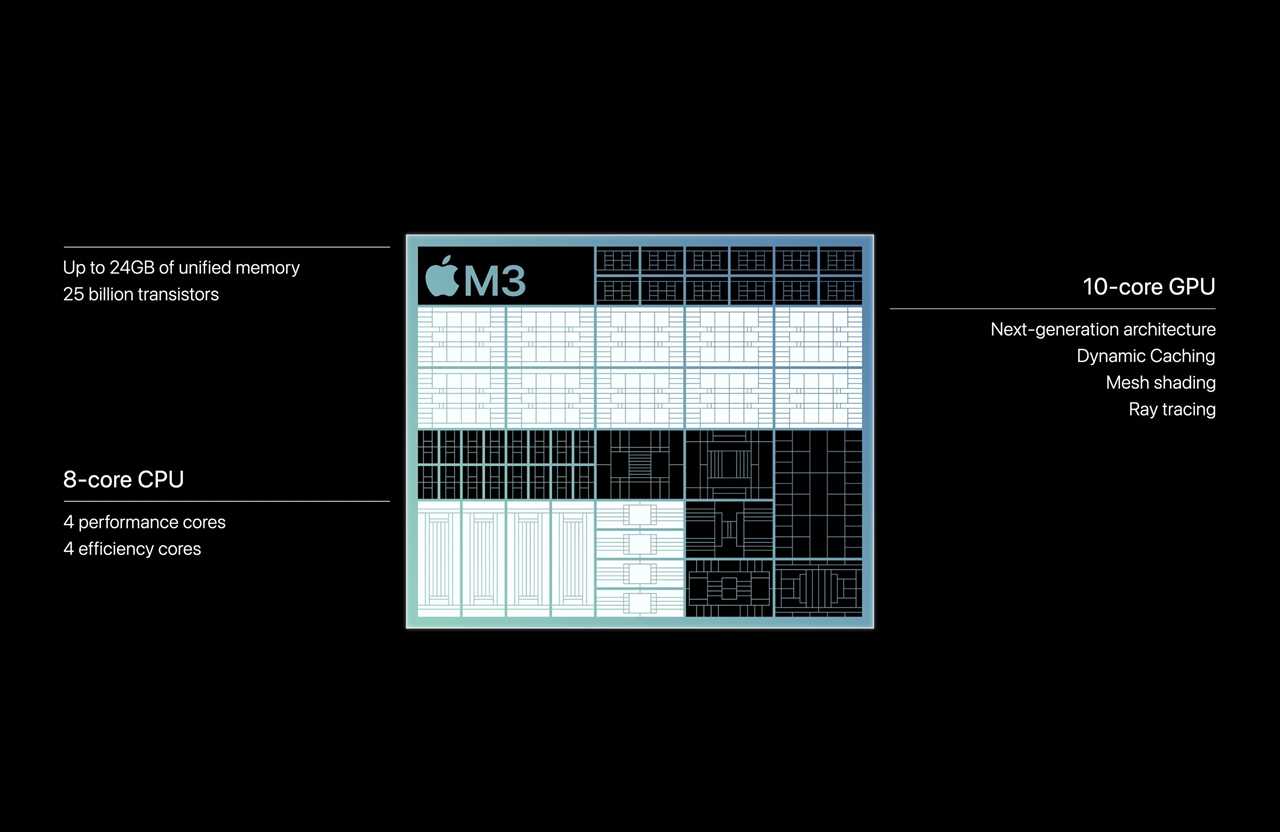
The M3 chip family starts with the base M3.
Apple
For more money, you can step up from the M3 to an 11-core M3 Pro chip, which offers an 18 percent increase, or to a 12-core M3 Pro for a 28 percent jump. However, because of the Pro’s core configuration, it might be a better investment to step up to a 14-core M3 Max, which is 60 percent faster than the base M3.
The 14-inch MacBook Pro is available with the M3, M3 Pro, or M3 Max chips; the 16-inch MacBook Pro comes with either a M3 Pro or M3 Max chip. The M3 Pro and Max are available with different CPU and GPU core options, and they also have more memory configurations available.
14-inch vs 16-inch MacBook Pro: Display quality and screen size
The 14 and 16-inch MacBook Pro have mini-LED displays with slim bezels. Screen sizes are actually 14.2 inches and 16.2 inches measured diagonally.
The screens offer good energy efficiency, contrast, and brightness. The brightness with SDR content has been boosted from 500 to 600 nits compared to the early 2023 14- and 16-inch models. With HDR content the new displays can go up to 1,000 nits sustained and 1,600 nits peak. That’s incredible HDR performance that beats nearly any other laptop display on the market.
ProMotion, when it arrived with the 2021 MacBook Pro models was a game-changer, bringing 120Hz high refresh rates to the MacBook Pro, while also allowing for dynamic variable refresh rates down to 24Hz, which is not only great for movie-watching, it’s a big benefit to battery life.
14-inch vs 16-inch MacBook Pro: Speakers, mics, and headphones
The 14- and 16-inch MacBook Pro have a six-speaker sound system that promises high fidelity in addition to support for Spatial Audio. All the MacBook Pros have a beamforming three-mic array, but the 14-inch and 16-inch models have improved sensitivity and a lower noise floor, so recordings should sound better.
There’s a headphone jack on all the MacBook Pros, and it supports high-impedance headphones. That’s great for studio headphones, which need more power to drive them.
The 2023 14-inch and 16-inch MacBook Pro’s HDMI port supports multichannel audio output.
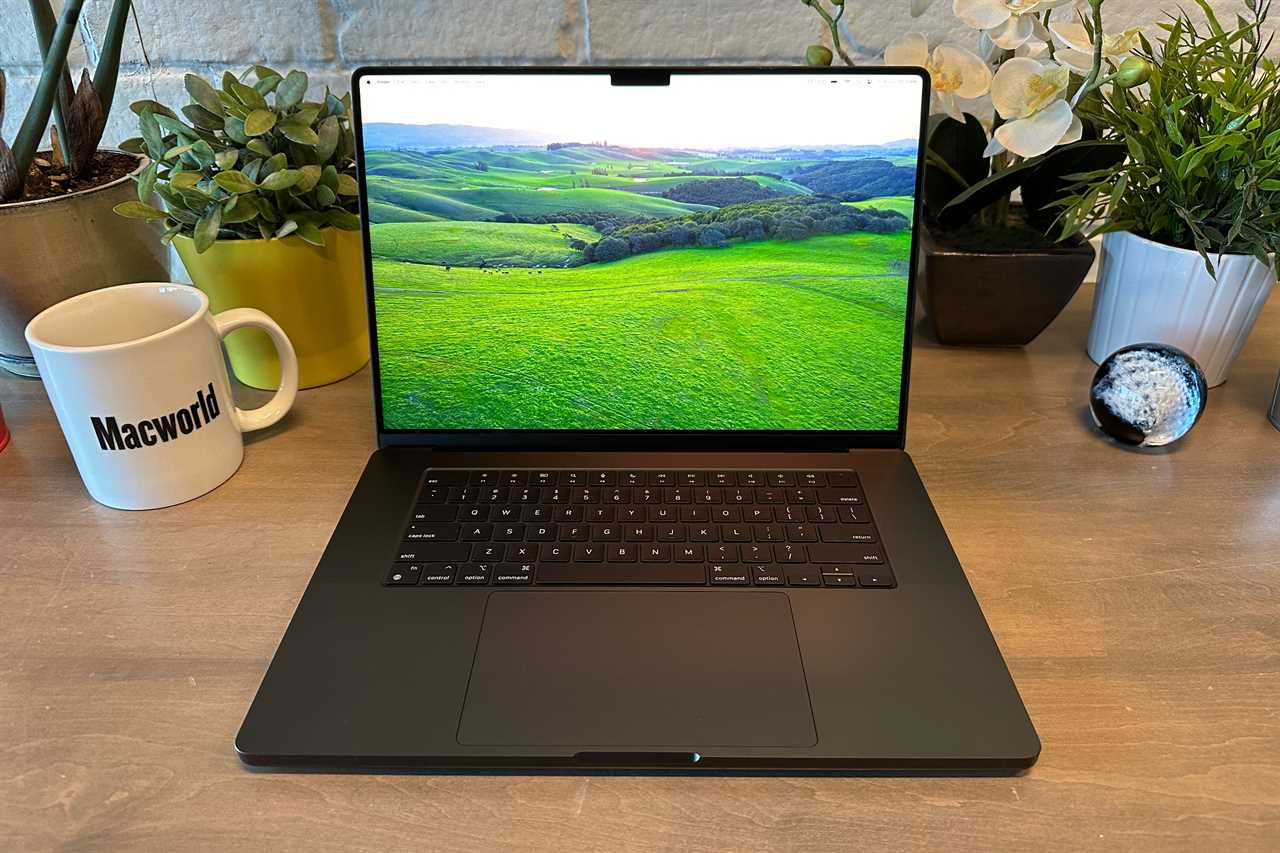
Foundry
14-inch vs 16-inch MacBook Pro: Webcam (and the notch)
The MacBook Pros have a 1080p webcam that uses an advanced image signal processor to help improve the image. It’s an improvement over the 720p in older MacBooks.
The webcam is housed in a pretty significant-sized notch at the top of the display, which first made an appearance on the 2021 MacBook Pro models. Despite looking very much like that on the iPhone, it’s not a TrueDepth sensor. There’s no Face ID or Animoji or anything like that. The notch doesn’t actually cut into the main display area, though. The area beneath the notch is a 16×10 display, just like all prior MacBooks. The display area on either side of the notch extends upward from there, adding screen area on top of the 16×10 rectangle. The menu bar is located in that area, effectively giving you more vertical space for all your apps. Developers can choose to use that extra screen space if they want to.
14-inch vs 16-inch MacBook Pro: Connectivity and expansion
Years ago, Apple got rid of our beloved MagSafe charging connector, opting instead to take up one of the few Thunderbolt ports for charging. And they got rid of the SD card slot and HDMI port, too.
When Apple updated the 14- and 16-inch MacBook Pro models in 2021, Apple gave us one additional Thunderbolt port, and it brought back the HDMI port, SDXC card slot, and MagSafe connector. Somewhat confusingly, the company also uses MagSafe as the brand for the iPhone’s magnetic charging and accessory attachment technology, which is sort of a different thing but also involves magnetic charging.
All this is unchanged in the 2023 models, apart from the HDMI port which now supports HDMI 2.1.
14-inch vs 16-inch MacBook Pro: Touch Bar
The 13-inch MacBook Pro had a Touch Bar. Apple dumped that laptop with the introduction of the M3 series in the 14- and 16-inch MacBook Pro, which also meant that it dumped the Touch Bar completely. The 14- and 16-inch MacBook Pro doesn’t have a Touch Bar, they have a full-height row of Function keys with a Touch ID sensor at the right. Both systems have a Touch ID button in the upper right of the keyboard like the iMac’s Magic Keyboard with Touch ID.
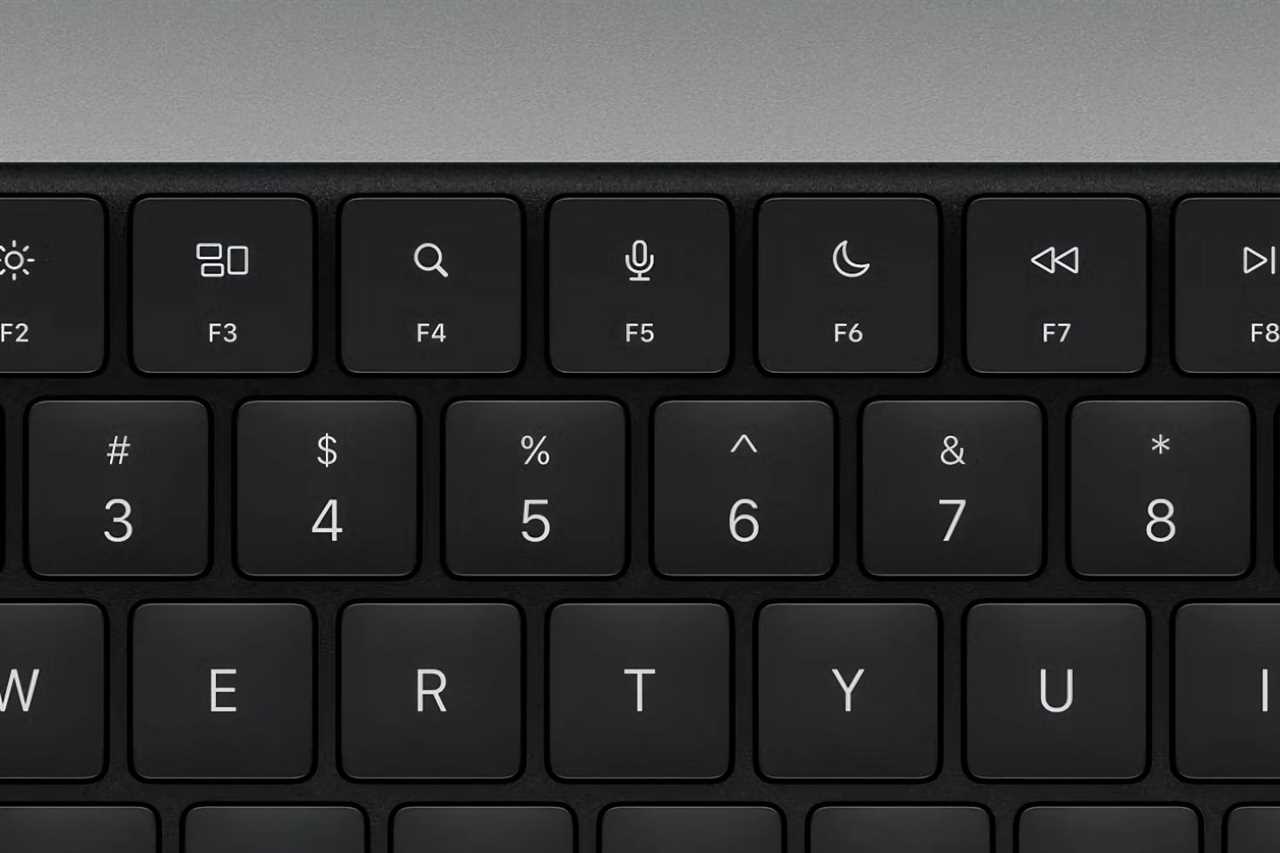
Apple
14-inch vs 16-inch MacBook Pro: Battery Life
The 14- and 16-inch MacBook Pros have really excellent battery life specs. The 70Wh battery in the 14-inch model will keep it going for 18 hours and the 16-inch model gets 22 hours of video playback out of its 100Wh battery.
The M3 and 11-core M3 Pro 14-inch MacBook Pro come with a 70W power adapter, and both also offer an option for a 96W adapter. The 96W model is necessary for fast charging and comes standard with some configurations, otherwise, it’s a $20 upgrade. The 16-inch model comes with a 140W power adapter in all configurations.
Verdict
The 14-inch or 16-inch MacBook Pro is the absolute pinnacle of the portable Mac. We recommend getting as much RAM and storage as you can afford. The sweet spot for most people will be the 12-core CPU/18-core GPU M3 Pro with 32GB of RAM and 1TB of storage, but we’re confident that you’ll be happy with any of the configurations Apple offers.
If you’re looking for a 13-inch M3 MacBook Pro, you won’t find it. Apple replaced it with the 14-inch MacBook Pro, which has a different design, no Touch Bar, a better display, and a higher price. Overall, the M3 MacBook Pro is a better laptop, but if you love the Touch Bar, you either have to accept the new keyboard, stick with your Touch Bar laptop, or find a 13-inch M2 MacBook Pro from a third-party seller or Apple’s Certified Refurbished Store. Alternatively, the 13-inch MacBook Pro might be the best option for you, see our comparison of the MacBook Pro vs MacBook Air.
If you are on a budget and the 14-inch M3 MacBook Pro looks attractive, get as much RAM as your budget will allow. If you can upgrade to at least 16GB of RAM, that will help it maintain good performance for years to come.
For more buying advice read our Best Mac guide.
Read More
Title: MacBook Pro comparison: 14- vs 16-inch MacBook Pro
Sourced From: www.macworld.com/article/545699/macbook-pro-13-vs-14-16-inch-comparison-difference.html
Published Date: Wed, 15 Nov 2023 10:35:13 +0000
.png)
